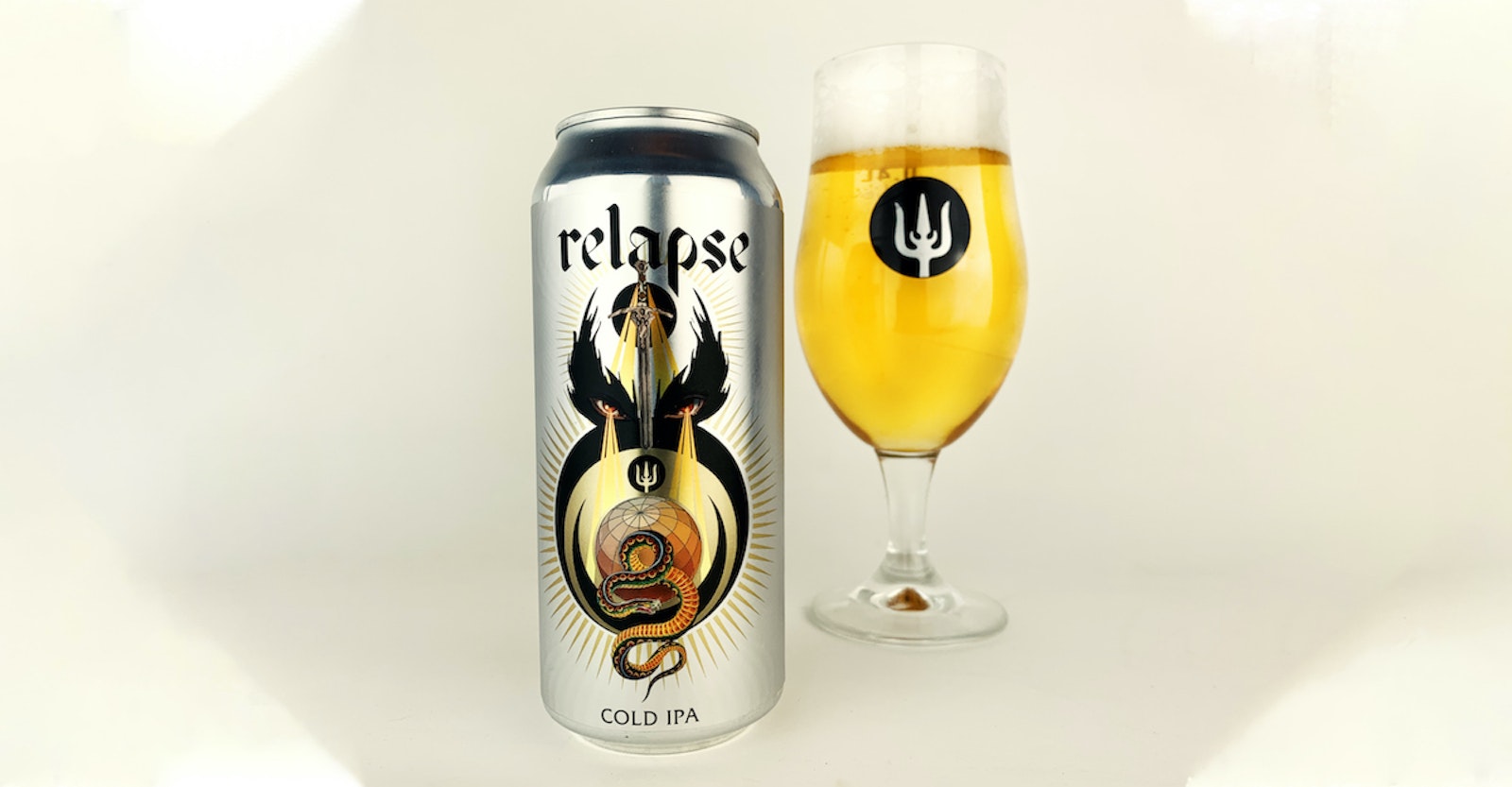Subscriber Exclusive
Recipe: Wayfinder Relapse IPA
Courtesy of Wayfinder Beer in Portland, Oregon, here is a recipe for their "cold IPA," which earned a spot among our Best 20 Beers of 2020.
“Wayfinder is a lager-centric brewery, with half of its beers being clean lagers and half hoppy IPAs,” says Kevin Davey, brewmaster at Wayfinder in Portland, Oregon. “It seemed like a good time to make something that was a fusion of the two: clean and refreshing but hop-fresh with a quick turnaround. Drier, crisper, more drinkable—wester than West Coast.
“On paper, Relapse is aggressively hopped with some classic C-hops,” Davey says. “The grist is more like an American malt liquor: pilsner and rice. When choosing a clean yeast, we considered Chico—but that would have stuck a third strain in our profile and given me a ton of headaches. Plus, everyone makes West Coasts with Chico. So, we decided to use our house lager strain but ferment warm, at 65°F [18°C].”
ALL-GRAIN
Batch size: 5 gallons (19 liters)
Brewhouse efficiency: 72%
OG: 1.061
FG: 1.008
IBUs: 70+
ABV: 7%
“Wayfinder is a lager-centric brewery, with half of its beers being clean lagers and half hoppy IPAs,” says Kevin Davey, brewmaster at Wayfinder in Portland, Oregon. “It seemed like a good time to make something that was a fusion of the two: clean and refreshing but hop-fresh with a quick turnaround. Drier, crisper, more drinkable—wester than West Coast.
“On paper, Relapse is aggressively hopped with some classic C-hops,” Davey says. “The grist is more like an American malt liquor: pilsner and rice. When choosing a clean yeast, we considered Chico—but that would have stuck a third strain in our profile and given me a ton of headaches. Plus, everyone makes West Coasts with Chico. So, we decided to use our house lager strain but ferment warm, at 65°F [18°C].”
ALL-GRAIN
Batch size: 5 gallons (19 liters)
Brewhouse efficiency: 72%
OG: 1.061
FG: 1.008
IBUs: 70+
ABV: 7%
[PAYWALL]
MALT/GRAIN BILL
8.4 lb (3.8 kg) Rahr Premium Pilsner or Great Western Superior Pilsen
3.6 lb (1.6 kg) rice flakes or rice flour
HOPS SCHEDULE
0.18 oz (5 g) Magnum [12% AA] at 90 minutes
1.7 ml isomerized hop extract [60% AA] at 90 minutes (for 35 IBUs)
0.6 oz (17 g) each Mosaic [12.25% AA] and Centennial [12% AA] at 10 minutes
0.6 oz (17 g) each Mosaic [12.25% AA] and Centennial [12% AA] at whirlpool for 20 minutes
2.8 oz (79 g) each Chinook and Cascade at dry hop
1.4 oz (40 g) Amarillo at dry hop
YEAST
2 packets of Fermentis SafLager W-34/70
DIRECTIONS
For the cereal mash: Mix the rice flakes with 13 oz (813 g) of crushed malt and 9 quarts (8.5 liters) of 131°F (55°C) water. Once there are no clumps, cereal mash to 167°F (75°C) and rest 15 minutes for gelatinization, stirring the whole time. Continue stirring and bring to a boil; boil this decoction for 30 minutes.
While the cereal mash is boiling, mash in with the malt at 97°F (36°C) and rest there. Once the decoction is finished, carefully add it to the main mash, stirring rapidly, which should bring the whole mash to about 140–144°F (60–62°C). Raise the temperature to 144°F (62°C), if necessary, and rest 30 minutes. Raise the temperature to 154°F (68°C) and rest 30 minutes. Raise the temperature to 162°F (72°C) and rest for 15 minutes. Do an iodine test (see On the Road to Conversion) to ensure that starches have converted, then raise the temperature to 172°F (78°C) and mash out. Sparge and lauter as necessary to get about 6.8 gallons (26 liters) of wort—or more, depending on your evaporation rate.
Boil 90 minutes, adding hops according to schedule. Whirlpool and add the whirlpool hop additions when the wort temperature has dropped to about 190°F (88°C); continue whirlpooling for 20 minutes. Chill the wort to 48°F (9°C), aerate well, and pitch rehydrated yeast. Ferment at 65°F (18°C). When fermentation reaches about 1.012, move the wort to a pressure vessel (such as a keg; must have pressure relief and a safety valve), dry hop, and add 15 psi—via spunding valve, if possible. Once the beer reaches terminal gravity, crash to 30°F (-1°C), remove the yeast and hops, and condition 1 week before filtering and packaging.
BREWER’S NOTES
The pilsner malt should be American—high free-amino nitrogen, high diastatic power; German pilsner malts don’t work as well with adjuncts. For the rice, you could also experiment with skipping the cereal mash and using rice syrup instead of flakes. For the yeast, Kölsch or Chico strains could also work for a “cold IPA.”
We carbonate via spunding (see Gearhead: The Force Behind the Fizz), and I like that for IPAs; it seems like carb stones can strip away aromatics. So, we dry hop on spunding day, when kräusening with fresh-fermenting Czech pils. It works great: The added fermentation scrubs the oxygen from the dry hops, we get some biotransformation, and it completely carbonates the beer.

